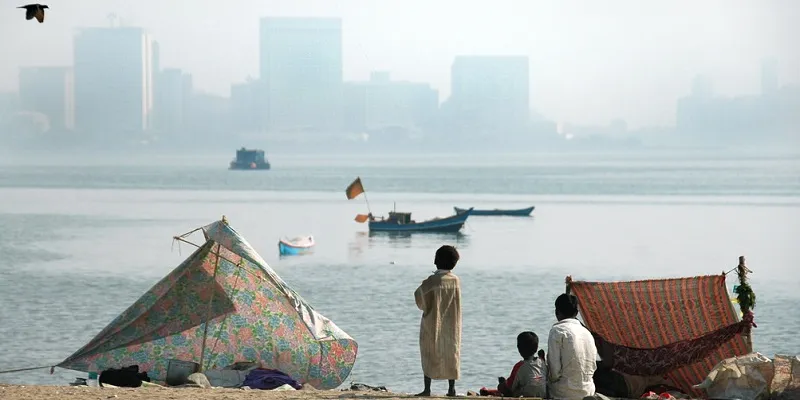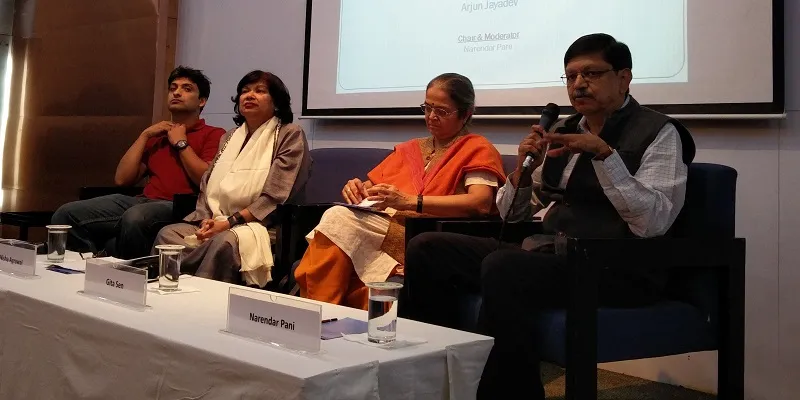India is the second most unequal country in the world; what can be done to reverse it?
Although the past few decades have witnessed a significant chunk of the world’s population coming out of extreme poverty, one in eight people still goes to bed hungry. Evidence also suggests that one of the key obstacles to the eradication of poverty today is inequality, which, according to the latest Oxfam report, has reached alarming levels.
According to the NGO, which works towards the alleviation of global poverty, the eight richest people in the world today have more wealth than the bottom 50 percent of the population combined. The richest one percent has more wealth than the rest of the world, and to make things worse, “power and privilege are being used to skew the economic system to increase the gap between the richest and the rest.”

To discuss the prevailing, lopsided world economy and the need to address the crisis of growing inequality, a panel discussion was organised by the Bangalore International Centre last Thursday. The panel consisted of Nisha Agrawal (CEO of Oxfam India), Gita Sen (Distinguished Professor and Director of the Ramalingaswami Center on Equity and Social Determinants of Health at the Public Health Foundation of India), Arjun Jayadev (Associate Professor of Economics at the University of Massachusetts Boston), and Prof. Narendar Pani (Head of the NIAS-UNDP Policy Research Initiative on Inequality and Human Development at the National Institute of Advanced Studies, Bengaluru).
At the discussion, Nisha Agrawal pointed out that 70 percent of the world’s population today lives in regions where inequality is on the rise. “This results in rising disbelief in the political system and the fall of democracy, which we are witnessing as a global phenomenon today,” she said.
Inequality in India
India too has witnessed a steep rise in the levels of inequality. According to a report published by P. Kundu, the spending gap between the rich and the poor in India has doubled in the past five years. Currently, the richest one percent of Indians holds more than 58 percent of the country’s overall wealth. According to Nisha,
“India is the second most unequal country in the world; the first being Russia, where the top one percent holds 70 percent of the country’s wealth. Even on the basis of income, India is second only to South Africa in inequality.”
Speaking on the social, economic and political reasons for such levels of inequality, Arjun Jayadev said, “Unlike in the past, today, there is no push for equalisation in our political discourse.” He further cited how the rise in monopolies and the withdrawal of public sense in trying to make the state accountable has further added to the problem.
Gita Sen pointed out how female work participation has been falling in India post 2010. Calling female workforce participation the “miner's canary” of evaluating an economy and its progress, she pointed out how the agricultural crisis in India needs to be addressed on priority. She also pointed out how, despite the Make in India rhetoric, there is rampant deindustrialisation going on at the grassroots, leading to women leaving the workforce. She added,
“Even Kanjeevaram sarees are being made in China. Labour-intensive industries are getting taken out. Robots and automation are taking over faster than we realise. This is a dangerous trend.”

What needs to be done
The panellists agreed on several measures that would help reduce inequality in India. These include more progressive taxation, introducing an inheritance tax, not reducing the corporate tax rates, increased spending in healthcare and education, and resurrecting small and medium enterprises.
“The Japanese pay 55 percent inheritance taxes. Americans pay 40 percent inheritance tax when wealth is passed on from parents to children. We must introduce a 30-35 percent tax on inheritance of wealth so that, in two to three generations, the wealth is returned to the society,” Nisha said.
Laying emphasis on the need for public sector reforms, she stressed how job creation in the healthcare and education sectors has the potential of bringing women back into the workforce and helping the economy grow in a more sustainable way. Answering an audience member’s question on the government’s inefficiency in implementing spending and welfare measures, she said,
“This is a vicious cycle. Too little is spent on healthcare and education, leading to inefficiency. This leads to further disbelief in the public sector. Unlike the rest of India, the Public Distribution System (PDS) works in Tamil Nadu due to technology and in Chattisgarh due to political will. So saying that something won’t work is not the answer.”







